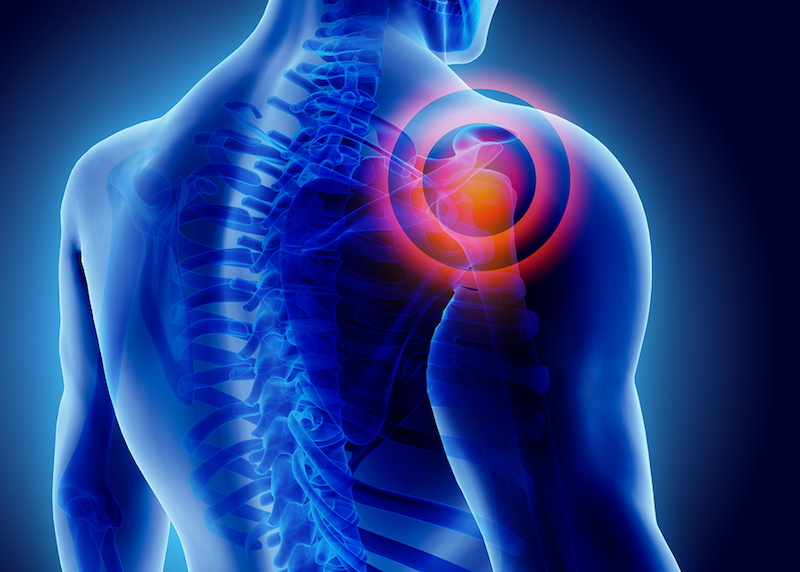If you have pain in your shoulder, there’s a strong chance shoulder impingement syndrome is responsible
If you look at an x-ray or an MRI of your shoulder, and the doctor tells you that your rotator cuff and bursa are being pinched, you may think that the only shoulder impingement treatment in Visalia is a knife. Let me share another natural option.
The shoulder is a complex joint consisting of numerous tendons, ligaments and muscles that allow the arm to move in several different directions. These structures help keep the shoulder stable and are crucial for its flexibility, but they also make it vulnerable to a number of injuries. This is one of the main reasons shoulder pain is so common, especially in individuals who perform lots of overhead movements. In most cases, this pain is due to a condition called shoulder impingement syndrome, but the good news is that physical therapy can help, regardless of its cause.
The shoulder is made up of three bones: the upper arm bone (humerus), the shoulder blade (scapula) and the collarbone (clavicle). The humerus and scapula are surrounded and connected by the rotator cuff, which is a group of muscles and tendons that keeps the shoulder stable and allows for the ball-and-socket movements of the joint. There is also a fluid-filled sac called the bursa between the rotator cuff and a bony prominence on the top of the scapula (acromion), and its function is to provide a cushion during movement.
In shoulder impingement syndrome (SIS), the tendons of the rotator cuff become compressed—or “impinged”—as they pass through the narrow space beneath the acromion. Over time, this causes the tendons to become irritated and inflamed, and will lead to bothersome symptoms like swelling and tenderness, loss of strength, restricted shoulder movement and shoulder pain at rest, when moving the shoulder overhead and/or when sleeping.
SIS is most common in individuals that regularly perform lots of overhead activities like golfers, swimmers, and baseball and tennis players, as well as painters and construction workers. If the condition develops, it’s strongly advised to receive physical therapy as soon as possible in order to prevent it from progressing further. Physical therapy for SIS typically consists of the following components:
- Activity modification/functional training
- Stretching exercises
- Strengthening exercises
- Hands-on (manual) therapy
- Posture education
A recently published study investigated the effectiveness of eccentric strengthening exercises—a treatment commonly used in physical therapy programs—for patients with SIS, and the results were very encouraging. The conclusion states:
An eccentric program targeting the external rotators was superior to a general exercise program for strength, pain, and function after six months. The findings suggest eccentric training may be efficacious to improve self-report function and strength for those with subacromial pain syndrome (another term for SIS).
Shoulder symptoms from SIS can severely impair your abilities to perform your job or just get through the day without pain, but it doesn’t have to be this way. If your shoulder is bothering you, contact your local physical therapist first and fast, and begin on your path to a pain-free future.

